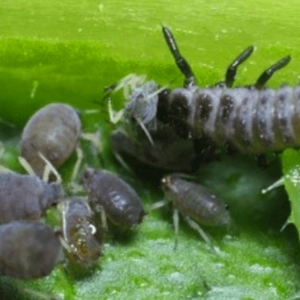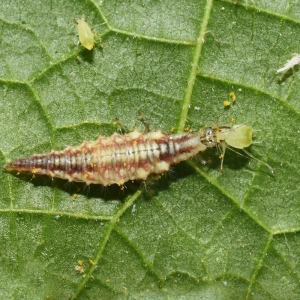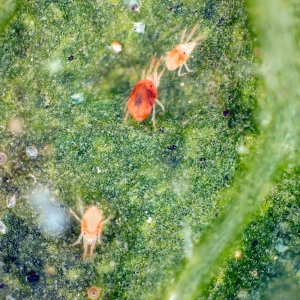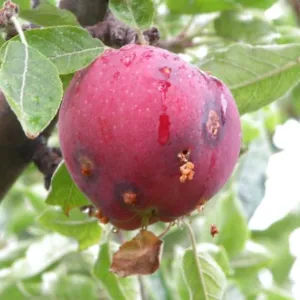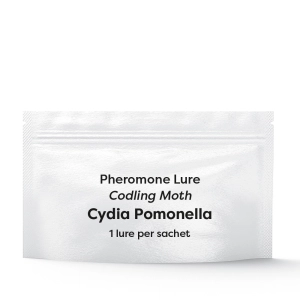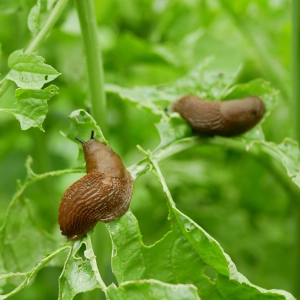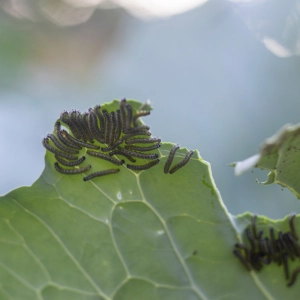Our top five pests to be on the lookout for in May include aphids, spider mites, slugs, codling moth and caterpillars – of various species. Read on to find out how to control them naturally without using standard pesticides.
Aphids
Aphids often appear on new green foliage, and May is usually the first month that gardeners really notice them on plants that are putting on a surge of growth.
They like to feed on the underside of leaves and on new buds in May - if you have used a high nitrogen fertiliser to encourage foliage growth on a particular plant, you may notice this is where aphids will reside. They will also cluster around stems in large numbers.
Use a biological control like Ladybird Larvae or Lacewing Larvae. These biocontrol larvae will target both greenfly and blackfly and are suitable for organic production. The larvae of ladybirds and lacewings feed on the aphids, consuming up to 100 aphids each a day.
Read more about aphid control here.
Spider Mite
Damage from spider mites shows up as brown and yellow spots and mottling / small lumps on leaves.
Spider mites are tiny so you will have to look closely to spot them. Use a magnifying glass and inspect the underside of affected leaves. If you don’t have a magnifying glass, try taking a photo with your phone and then zooming in.
If spider mites are present, you will see tiny mites and round eggs. Fine silk webbing will also be present where there is a large infestation.
Use a biopesticide to control spider mites in May. Phytoseiulus persimilis and Amblyseius andersoni are the correct predator species for spider mite control.
Both species are very small predatory mites. Amblyseius andersoni controls spider mites by attacking and sucking the insides of their prey and will give good control indoors and outdoors.
Phytoseiulus persimilis females lay eggs on the spider mite hot spot. The hatched larvae then eat up to five adults a day or 20 eggs a day depending on the stage – until they become adult mites.
Read more about spider mite control here.
Codling Moths
Codling moth caterpillars can cause significant damage to fruits such as apple, pear, walnut and quince. Although they won’t stop you from eating the fruit, they will significantly alter the look and quality of produce.
The codling moth lay their eggs on the fruit from where their larvae hatch and burrow into the fruits leaving damage in their wake.
Codling moth grubs can destroy the entire crop of an apple tree causing early ripening, fruit falling, malformed fruits containing black or brown frass, and fruits with a distinctive black exit ‘hole’ on the outside.
Use a pheromone trap designed to lure and kill only the codling moth. This is a castellation type trap that will prevent non target species from being lured in.
Find out more about pheromone traps here.
Slugs
Slugs eat large amounts of vegetation, fruits and other plant material. Uncontrolled, they can destroy entire plants, including fruit and vegetable crops - very quickly.
While snails feed all day long, slugs are nocturnal which makes them more difficult to remove or control. You may have tried slug pellets in the past and now want to try a more natural solution.
A great way to control slug infestations - organically - is to use a natural control like nematodes. Phasmarhabditis sp. are UK native microscopic worms that actively seek out a variety of slugs, feeding and multiplying inside them, then infecting them with a bacterium.
Once infected, the slugs will stop feeding and die. The nematode will then leave the dead slug and go on to seek out more slugs, repeating the cycle. Nematodes also reproduce inside the slug larvae, releasing more nematodes into the surrounding area.
Find out more about natural slug control here.
Caterpillars
There are many different caterpillar species that will damage fruit and vegetable crops in May – just when you’re trying to encourage new growth!
Nematodes have been shown to be very affective in dealing with a range of commonly occurring fruit and veg pests including the caterpillars and larvae of:
• carrot root fly
• cabbage root fly
• cutworms
• onion fly
• sciarid fly
• shore fly
• caterpillars
• gooseberry sawfly
• thrips
The treatment for these pests can be used as a soil drench to tackle soil dwelling larvae and a foliar spray to tackle active caterpillars.
Find out more about natural caterpillar control here.




